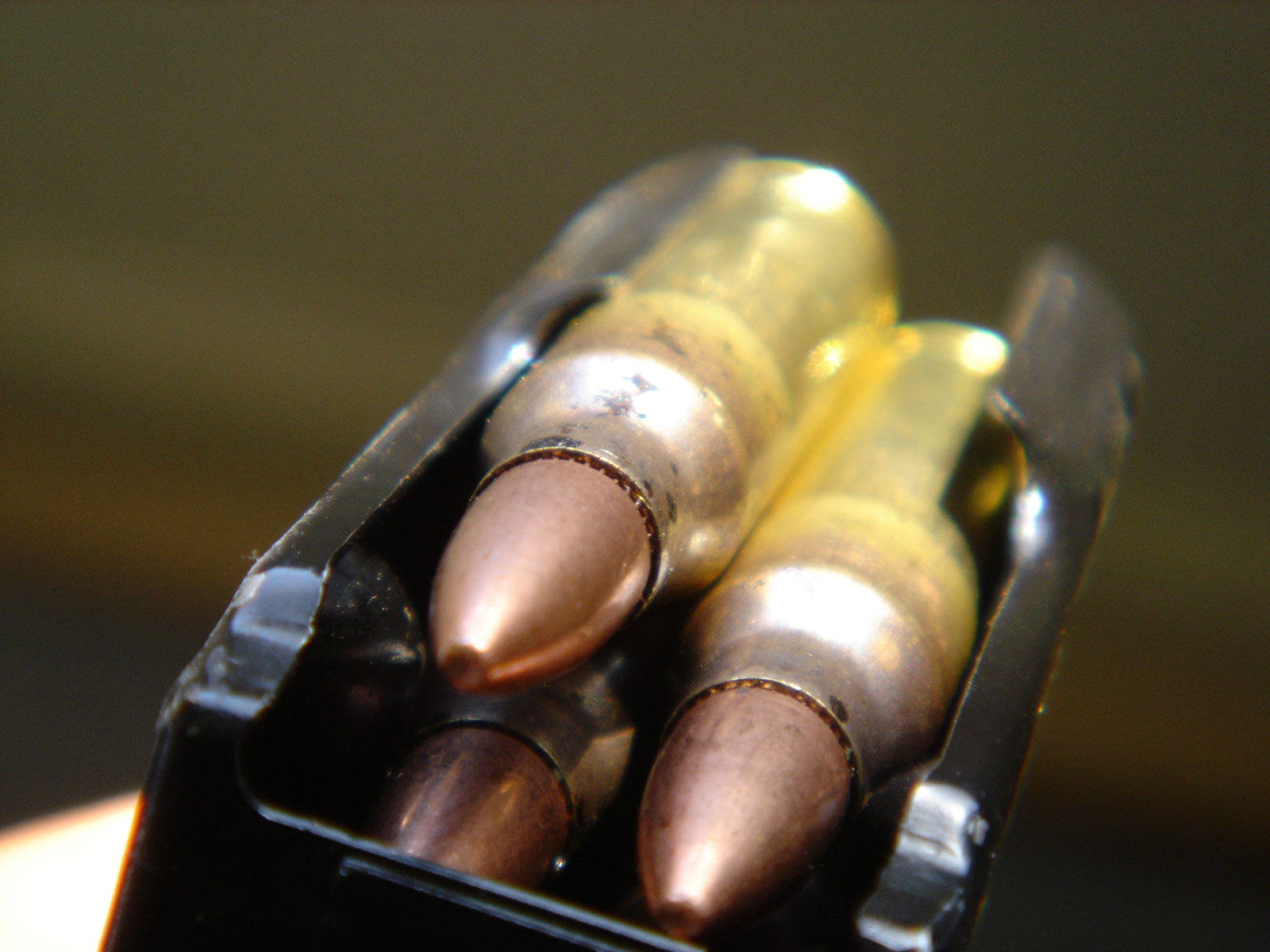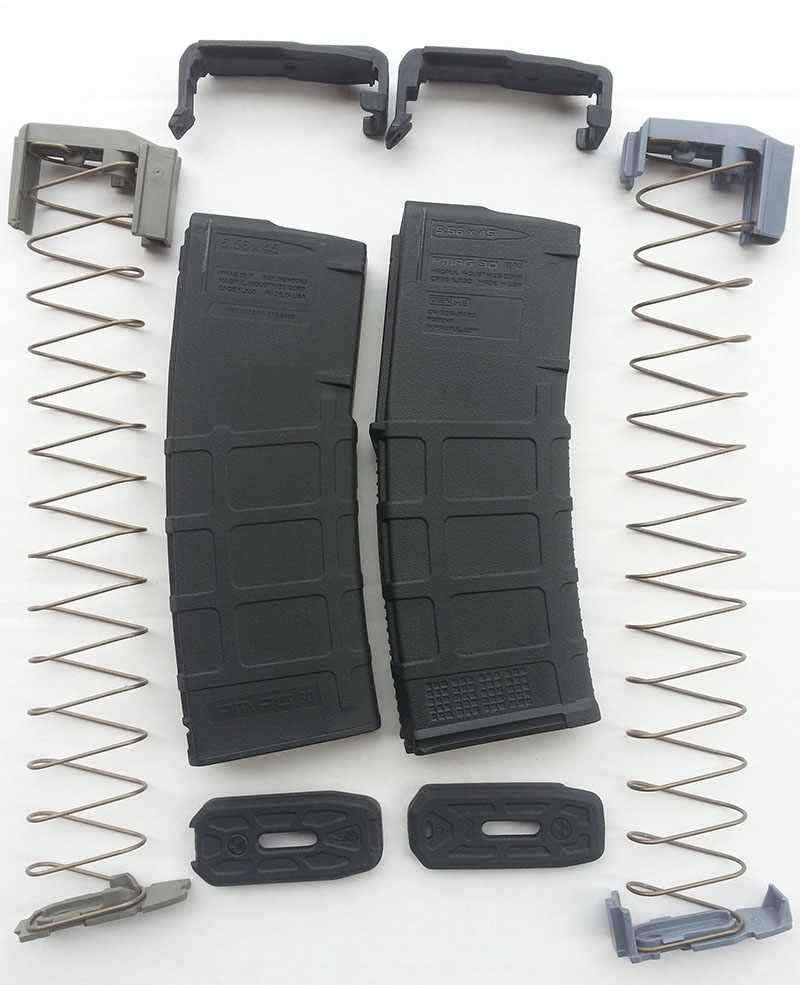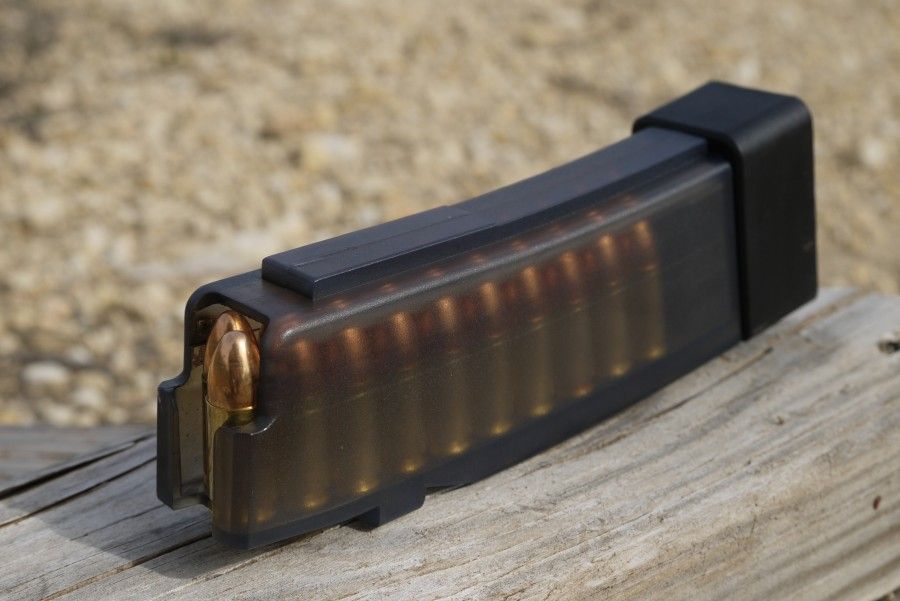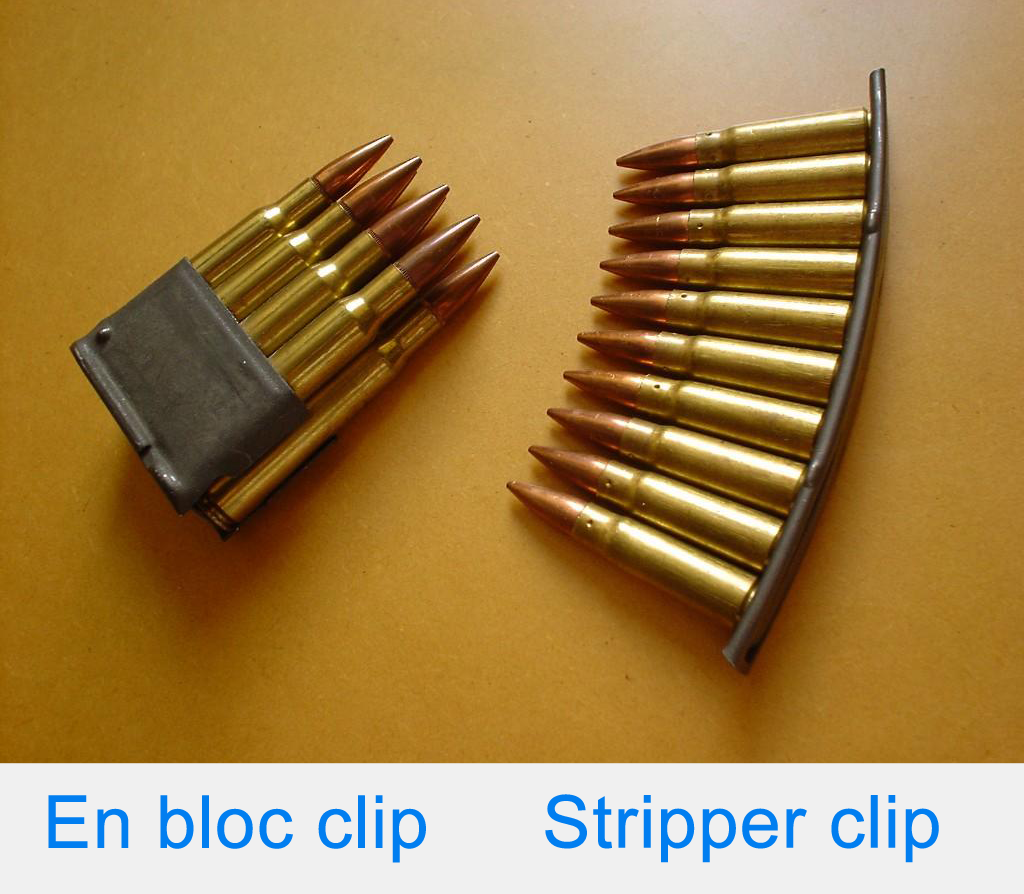
A lot of people use the two terms interchangeably, but they are different approaches to solve a problem.
The problem is "How store ammunition in the gun and get it ready for the next shot, instead of picking loose ammo out of my pocket every time I want to shoot?". Clips and magazines are answers to this problem.
Both items hold ammunition together in such a way that the ammunition is in the proper position to be pushed into the chamber of the firearm for the next shot. How they do this is the difference.
Magazines
Magazines start out as metal sheets, but they also have a separate spring, a ammo pusher called a 'follower', and a base plate at the bottom to hold everything in.

Put together, the parts form a box (which is why we call them box magazines) that holds all the ammo in the correct position, and can then be placed in the firearm ready to use.

The oldest type of magazines were built into the firearm, but the safety of removable magazines lead to their current dominance in firearms today. Also, modern materials allow for plastic magazines, making them cheaper and lighter.
Clips
Clips start with a flat sheet of springy metal, which is bent into a shape which can "clip" a given amount of ammunition together in the right shape for the firearm to "feed" into the firing position properly. Some types are like a strip of ammunition ('stripper clips'), while others hold ammo like in a block-like shape ('en-bloc').

The en-bloc type is placed in the firearm and stays in the firearm as it is used, and the stripper type is placed in position above an internal magazine in the firearm and the ammo is slid down by hand pressure and 'stripped' into the firearm's magazine.
Stripper clips were most often used in the first world war for bolt-action rifles that had internal magazines; the en-bloc clip shown is for the M1 Garand, used by U.S. forces in WW2. Both have their benefits and problems; it's the firearm designer's choice as to which fits best for the intended use of the firearm.
So, now you know the difference. 🙂